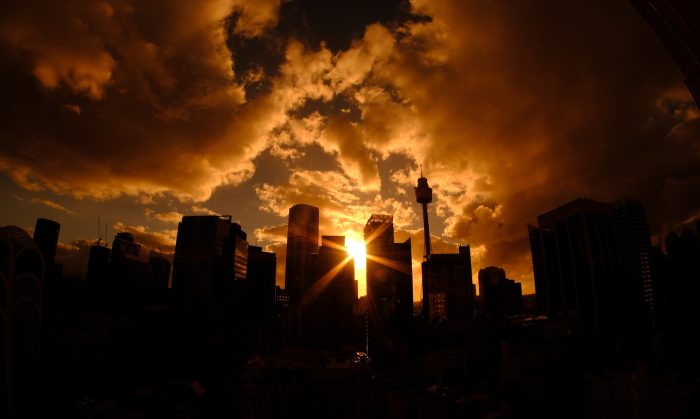Jonathan Brown with Centre researchers.
“This is completely unprecedented in the UK”
Dr Ailie Gallant
Following the United Kingdom exceeding 40˚C for the first time on record and wildfires leading to mass evacuations across Europe, experts from the ARC Centre of Excellence for Climate Extremes have provided insight into the northern hemisphere’s extreme events and what the implications are for Australia.
Speaking with the ABC/triple j’s Hack, Dr Ailie Gallant expressed shock at the broken record and explained the weather system that pushed temperatures past records:
“This is insane. This is completely unprecedented in the UK. Temperature records have been smashed from London as far away up north as southern Scotland. They’ve been smashed by a couple of degrees. This is a really unprecedented situation which has been caused by a weather system that’s basically funnelling hot air from north Africa.” – ABC/Hack
Why have European cities been hit so hard?

Dr Gallant says Europe’s buildings and infrastructure simply weren’t prepared.
“The infrastructure just isn’t built for it. These are old cities with oftentimes old buildings. They don’t necessarily have air conditioning – they’re typically built for the cold. They’re kind of designed to trap heat – once they heat up, they stay hot…because these temperatures aren’t normal temperatures, they’re not engineered to be built for these extreme temperatures.” ABC/Hack
Did climate change cause the United Kingdom and Europe heatwave?
Attributing specific events to climate change is challenging scientifically and takes significant analysis in the months following major extreme events, but speaking with SBS News Dr Michael Barnes warns a sense of realism is needed for the future.
“We must be careful in attributing things to climate change, especially singular events. When we are talking about climate change, we’re talking about how things are expected to change on average going forward in the future. But at the same time, we do need to be realistic about what’s going to happen in the future.” – SBS News
What does the UK and Europe heatwave mean for Australia?
Dr Andrew King, writing for The Conversation says:
Australia has, of course, experienced many days with temperatures of 40℃ or more. But we struggle when it persists for several days.
Research shows the impacts of climate change are accelerating rapidly across ecosystems, food production, cities and towns, and health and well-being.
Heatwaves kill more Australians than any other extreme weather event. Hospitals are strained as admissions rise. Public transport can be disrupted, energy supplies come under pressure, and the bushfire risk increases.
Experts say extreme heat also poses a substantial threat to Australia’s economy.
In January this year, temperatures in the Western Australian town of Onslow peaked at 50.7℃ – equalling the Australian record.
Globally, the number of days over 50℃ has doubled since the 1980s. Such temperatures are still rare in Australia. But as climate change worsens, more extremely hot days will occur across the continent.
Australia has warmed by around 1.4℃ since 1910, well ahead of the global average of 1.1℃. Even if warming is kept below 2℃, Sydney and Melbourne are expected to see 50℃ days in coming years.
In the summer of 2019-20 the Western Sydney suburb of Penrith came close, reaching 48.9℃.
Read Dr King’s full article here.
What can cities do to prepare for extreme heat in the future?

Dr Gallant says cities can adapt to a hotter future.
“There are heaps of things we can do to make our cities more heat sensitive. Things like planting street trees can provide a lot of shade…you can put in a lot of things like fountains, even just small parks on city streets and small grassy areas and trees…to provide a little bit of evapotranspiration from the grasses and the bushes which just cools things that little bit, it can make a difference. Also, things like…painting buildings white so that they reflect some of the temperature, some of the heat, that can actually make quite a sizeable difference” – ABC/Hack
Expect more extremes for Australia

Dr Barnes warns that even meeting the Paris targets might not be enough.
“Even under the Paris Agreement, there’s a possibility of having 50-degree days in Melbourne and Sydney, for example. So if we fail to meet Paris agreement, we could get a reasonably high frequency of very extreme heat days exceeding 50 degrees, more often having days over 40 degrees in our biggest cities in Australia.” – SBS News
Dr King agrees, adding that action on greenhouse gas emissions is vital:
“Governments really need to implement policy to drastically reduce greenhouse gas emissions if we’re going to have any chance of meeting the Paris agreement and limiting the future rise in extreme heat events like the ones we’re seeing at the moment.” – SBS News
